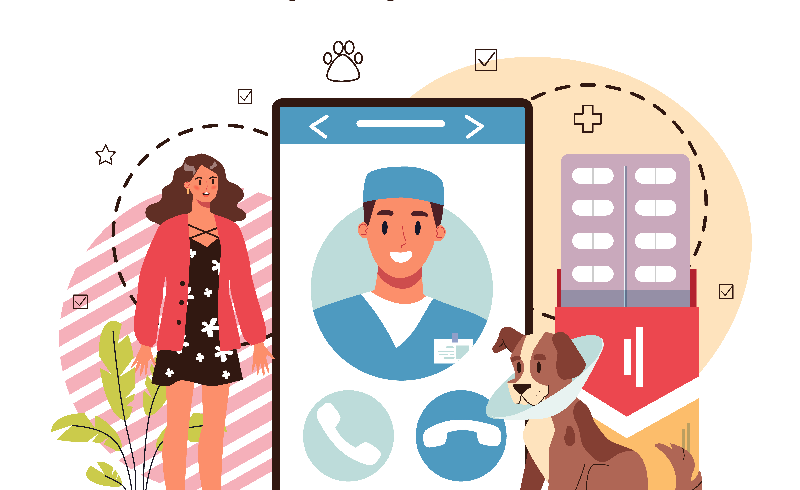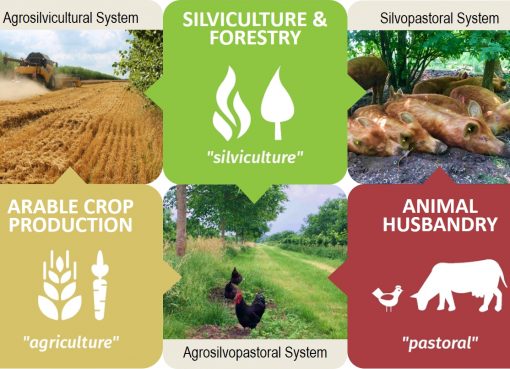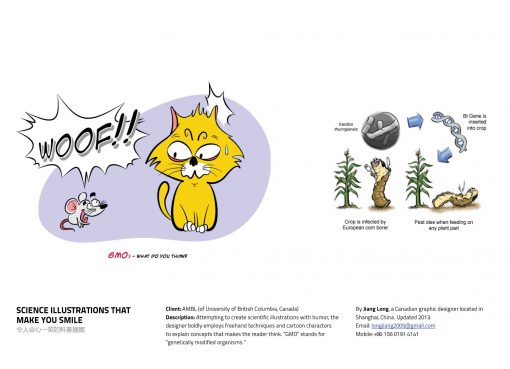Pubaleem Deka1 and Gunajit Das2
1Assistant Professor, Department of Veterinary Medicine, IVSAH, SOA (deemed to be University), Bhubaneswar, Odisha
2Scientist, AAU- Zonal Livestock Research Station, Mandira, Kamrup, Assam
Corresponding author email: pubaleemdeka2@gmail.com
Abstract
Veterinary medicine and animal husbandry are rapidly evolving, with the use of telemedicine systems becoming increasingly important. These systems, which include computers, imaging software, modems, and X-ray image capture equipment enables veterinarians to provide support, monitor critically ill animals, and access specialists for treatment plans. However, veterinary telemedicine faces limitations such as lack of a valid veterinarian-client-patient relationship (VCPR), technological constraints, and legitimate complaints of malpractice or misdiagnosis. It also requires multiple phone calls, which can lead to misunderstandings, misquotations, time wastage, and missed calls. Despite these challenges, veterinary telemedicine is a supplement to current clinical practices and should be considered legally and ethically. It complements traditional methods and enhances the overall approach to veterinary care, benefiting animals, clients, and veterinarians.
Keywords: Telemedicine, telehealth, veterinary practice, animal health, VCPR
Introduction
Veterinary medicine and animal husbandry are specialized fields that manage and care for various animal species. The utilisation of telemedical methods in veterinary care is evolving. Veterinary services, like human medicine, is becoming more digitalized with the recent use of telehealth and telemedicine. Telehealth is the term used to describe technological applications that provide remote health information, training, or care. Telehealth is divided into three categories: telemedicine, teleconsultation, and tele-triage. Telemedicine, which offers consultations with veterinarians via telephone, video call, or web streaming, has gained attention due to the COVID-19 pandemic, allowing clients to consult without bringing their animals to a clinic. Veterinary telemedicine allows remote consultation, diagnosis, and treatment between veterinarians and pet owners, requiring a valid veterinarian-client-patient relationship (VCPR). Despite initial debate, it has significantly improved animal welfare in many countries, especially during the COVID-19 pandemic. Teleconsultation involves consulting a veterinarian and an attending veterinarian seeking advice, while tele-triage provides general medical advice like veterinary care and management, animal husbandry, nutrition, and vaccinations.
The development of veterinary telemedicine has gone through three stages: innovation (1990–1995), offering by several vendors (1996–2001), and becoming indispensable (2002–2010). Despite the initial use of cell phones for telehealth since their invention, they were only officially introduced in 2016 due to the information revolution. The COVID-19 pandemic and subsequent lockdowns have significantly accelerated the global interest in veterinary telemedicine, highlighting its importance in the field of medicine. Global studies show that veterinary telemedicine is increasingly being used in small animal practices, providing pet owners with remote access to veterinary care. India’s veterinary public telemedicine is still in its early stages, despite the availability of technology like cell phones, applications, and digital cameras.
Telemedicine systems are crucial tools for veterinary practice, but they require veterinary professionals to adapt and grow with technology. These systems consist of a computer, imaging software, text, communication software, a modem or Ethernet card, and X-ray image capture equipment. Facetime video calling has been successful in transmitting visual information when specialist treatment is unavailable. Telemedicine services can be implemented for most active clients, opening new ways to deliver veterinary care during social isolation restrictions. It is gaining popularity in modern veterinary care due to its potential to improve animal welfare and alleviate the workload on physical clinics. It also aids in veterinary continuing professional development by providing ongoing education through videoconferencing and tele-consults.
Legal aspects of Veterinary telemedicine
Veterinary telemedicine is a supplement to current medical practices, not a replacement. It should consider legal and ethical considerations, as each country has its own regulations. The veterinary community must be aware of the legal implications of veterinary telemedicine, as the laws governing animal telemedicine are currently in flux. A standard protocol could be implemented in clinical settings to mitigate potential legal issues and reduce uncertainty surrounding these issues. Veterinary services often require in-person checks for animals before diagnosis and treatment via telemedicine. This requires a valid VCPR and informed consent for telemedicine. A valid VCPR ensures adequate information for diagnosis and treatment, ensuring timely care and follow-up.
Advantages of Veterinary telemedicine
Veterinary telemedicine is a valuable tool for rechecking examinations, managing chronic diseases in pre-existing conditions, and conducting preventive care. Veterinarians can benefit from veterinary telemedicine, which allows them to provide 24/7 chat support, monitor critically ill animals, access specialists for advice for treatment plan, reducing clinical errors and improving treatment outcomes. This technology also allows veterinarians to connect with patients who cannot physically visit hospitals for assessments or follow-up visits. Remote veterinary telemedicine can be performed using appropriate equipment, software, and personnel, allowing for remote examinations using cameras, stethoscopes, robots, and support workers. Technical and support professionals are essential for technical assistance and connection with electronic medical records for effective telemedicine.
Drawbacks of Veterinary telemedicine
Veterinary telemedicine has certain limitations which include lack of a valid VCPR, technological constraints, and legitimate complaints of malpractice or misdiagnosis, as well as technological constraints. Telemedicine in veterinary practices often requires multiple phone calls, which can lead to misunderstandings, misquotations, time wastage, and missed calls, which can delay the outcome and affect patient satisfaction. The use of veterinary telemedicine has potential limitations, including potential inaccuracies, a lack of physical examinations, damage to the veterinary profession’s reputation, and less effective client-veterinarian dialogue. Technological difficulties may also lead to missed diagnoses or delayed treatment.
In conclusion, veterinary telemedicine is a revolutionary approach that enables communication between clinicians and patients without physical contact, expanding the geographical reach of clinical veterinary practice. It complements traditional methods and enhances the overall practice of veterinary medicine, benefiting animals, clients, and veterinarians as it enhances the overall approach to veterinary care.
References
Pathak, A. and Kumar, D. (2017). Telehealth in India: helping to achieve health for all. Veterinary Record, 180(23), pp. 572–573.
Abu-Seida, A.M., Abdulkarim, A. and Hassan, M.H. (2024). Veterinary telemedicine: a new era for animal welfare. Open Veterinary Journal, 14(4), p. 952.
Springer, S., Lund, T.B., Corr, S.A. and Sandøe, P. (2024). Seeing the benefits but not taking advantage of them: dog and cat owners’ beliefs about veterinary telemedicine. Veterinary Record, 194(5), e3312. doi: 10.1002/vetr.3312.
Becker, B., Tipold, A., Ehlers, J. and Kleinsorgen, C. (2023). Veterinarians’ perspective on telemedicine in Germany. Frontiers in Veterinary Science, 10, p.1062046.




